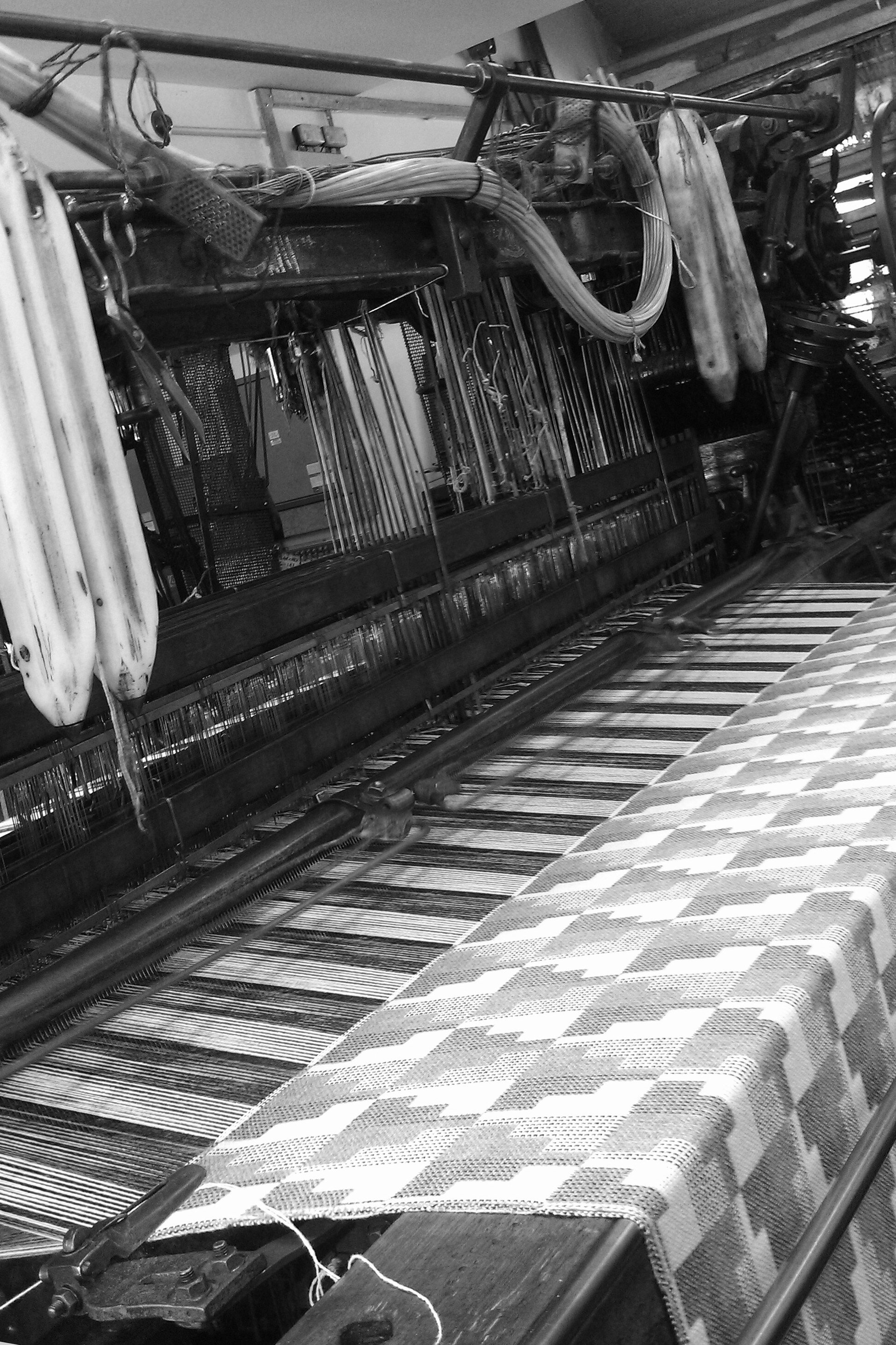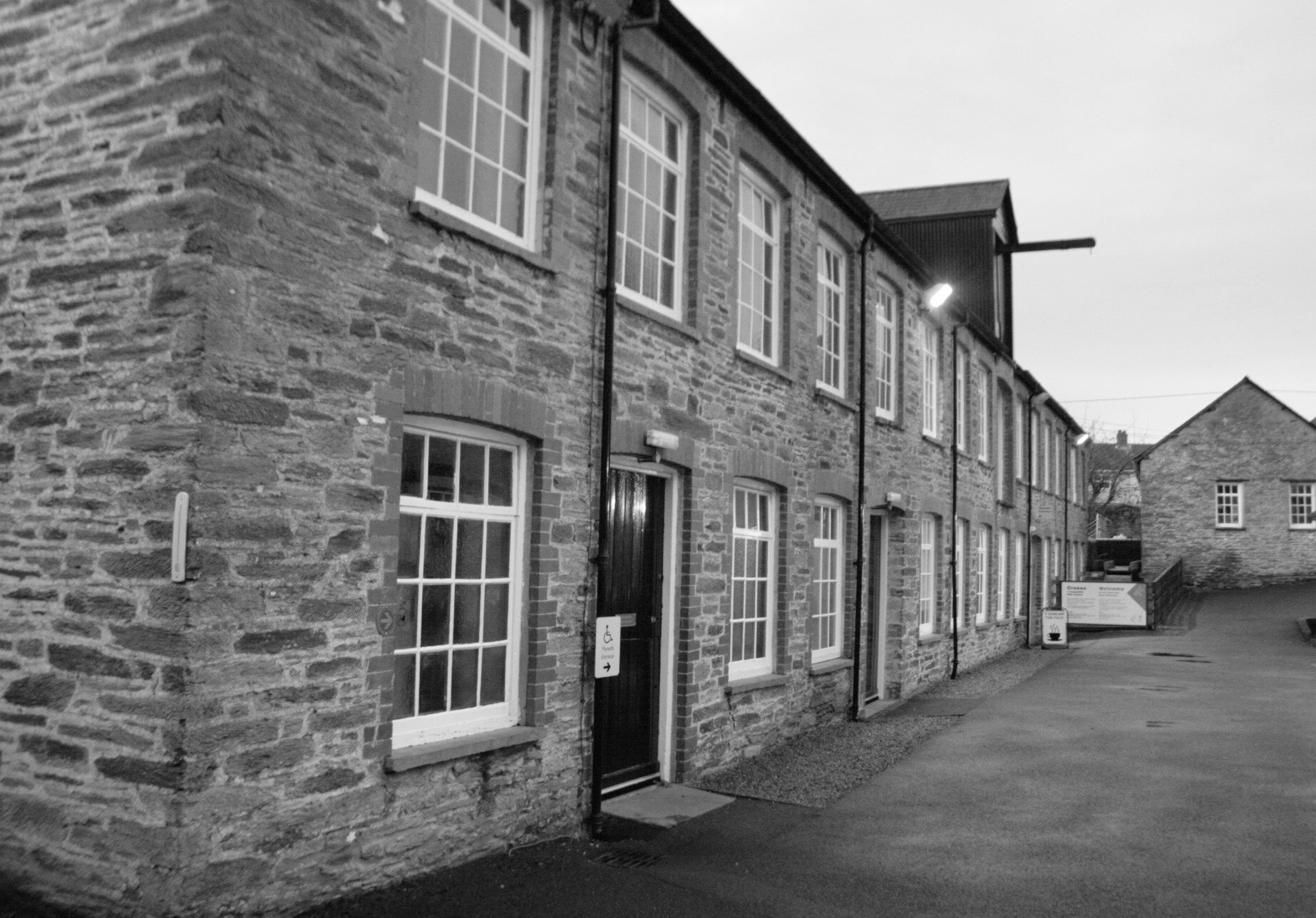A conversation with Raymond Jones
Many of our blankets are woven at Melin Teifi in Carmarthenshire, South West Wales. The mill is a small Welsh-speaking family-run business. ‘Melin’ means mill in Welsh and the Teifi is the river on which it sits - there has been a mill on this site since the 1880’s. Owner-managers Raymond Jones and his wife Diane have together clocked up more than a century at the mill, starting there with summer jobs in the early 1960’s (when the mill was known as the Cambrian Woollen Mills) and establishing the business under its current guise (as Melin Teifi) in the early 1980’s. Theirs is a fascinating story of triumphs and adversity – an apt narrative for the times.
I first met Raymond in 2004. I was working on a commission for the National Trust for a series of large hand-woven panels and was looking for a mill that could weave extra wide fabric for the panel backs. A blanket mill, with looms of a weaving width of 6 foot 6 inches was an obvious choice and I packed up our little Nissan Micra with several boxes of yarn and headed west. I remember Raymond’s infinite patience – I had no experience of production weaving and he held my hand through the process. When these first precious lengths were lost in a Fed Ex depot somewhere outside Swansea he re-wove the whole order at his own expense. I was amazed at what I now know as his instinctive sense of personal responsibility and his extraordinary work ethic, and I was won over immediately. I have worked with Raymond ever since and he has woven many thousands of metres for us over the years.
Raymond started at the Cambrian Woollen Mill, as it was then known, with a summer job in 1964 washing cloth. He was 19 years old and saving up for a sports car. At the time Raymond was doing an electrical installation course and had no thought of a long-term job in textiles. His aptitude for mechanics and his can-do attitude were, however, soon spotted by the mill’s manager Yorkshireman Ernest Wilden and he was offered a full time job following his course. There was another reason to bring Raymond back to the mill – his future wife Diane. She worked in the sewing room at the mill, on the Singer 138 machine which whipped the edges of the blankets. The sewing room was directly above the mill office and Raymond remembers watching Diane climb the stairs carrying piles of ten blankets at a time – his eye was caught by this petite ‘strong girl’ and they married in 1968. He was 22 and she was 19.
The Cambrian Woollen Mill specialized in flannels and plain striped blankets. The flannel was used primarily for work shirts – wool fabric with a cotton neckband. The shirts were were made in the sewing room at the mill with dark colours for the mining and steel industries and light for other trades. Melin Teifi continues to produce plain, striped and checked flannel fabrics and today much of this is used for traditional Welsh costumes.
Alongside his increasingly important role at the mill, Raymond played the drums in a number of bands. The first of these, The Rivals saw him starring alongside his two brothers. Music was a big part of his life from the early 60’s through to the early 70’s – latterly playing in the holiday camps of West Wales. Indeed there is still more than a little of the Tom Jones in his curly hair and the twinkle in his eye.
In the 1980’s another interest came to the fore – competition fly-fishing. In childhood Raymond fished in the stream at the bottom of his garden and this early interest was fostered by a neighbour - a blacksmith and keen angler. His ambition to ‘fish for Wales’ grew and in 1984 he made the Welsh International Team. Four years later he represented the country in the world fly-fishing championships in Tasmania, and was placed sixth overall in the world rankings. He speaks fondly of his time in the Tasmanian highlands and the warm welcome of the local anglers. Fly-fishing on the opposite side of the world, in a completely different habitat is no small feat. Although they were fishing brown trout, imported into New Zealand from Scotland in the early eighteenth century, the local insects were quite different. Flies had to be adapted and tied to mimic the small, indigenous, chocolate-brown coloured mayflies – quite different to the larger amber-olive coloured European variety. When I spoke with Raymond at the beginning of the lockdown he had just unearthed an old box of flies, and was planning to tinker around with them in the coming weeks.
The mill site dates back to the 1880’s, although the original buildings burned down and were replaced in 1919 with the structures that stand now. When recession hit in the early 1980’s, the Cambrian Woollen Mill went into receivership and Raymond and Diane were handed their notice along with the rest of the work force. Unwilling to give up their vocation, the Jones’s put their own home (a house which they had built themselves) up as collateral. With a subsequent loan from the bank they set up their own operation nearby - initially in an industrial building which had seen former service as a school and before that a POW camp. They bought six Dobcross shuttle looms from a Yorkshire mill – the same looms are still in service today thanks to Raymond’s mechanical prowess and TLC. The original Cambrian mill buildings were converted by the National Museum of the Welsh Woollen Industry in 1984 into an industrial museum, and Raymond and Diane were invited to return to the site as a working mill running alongside the museum. The early years were tough, and they nearly went under when a bankrupt client left a huge unpaid bill… but they tightened their belts and weathered this storm.
The mill now employs seven people – many have worked at Melin Teifi for decades. It is testament to the hard work and self-reliance of Raymond and Diane that the mill continues to thrive. The looms are quiet now of course, but we hope it will only be a matter of time before the buildings ring with those familiar sounds of industry.





